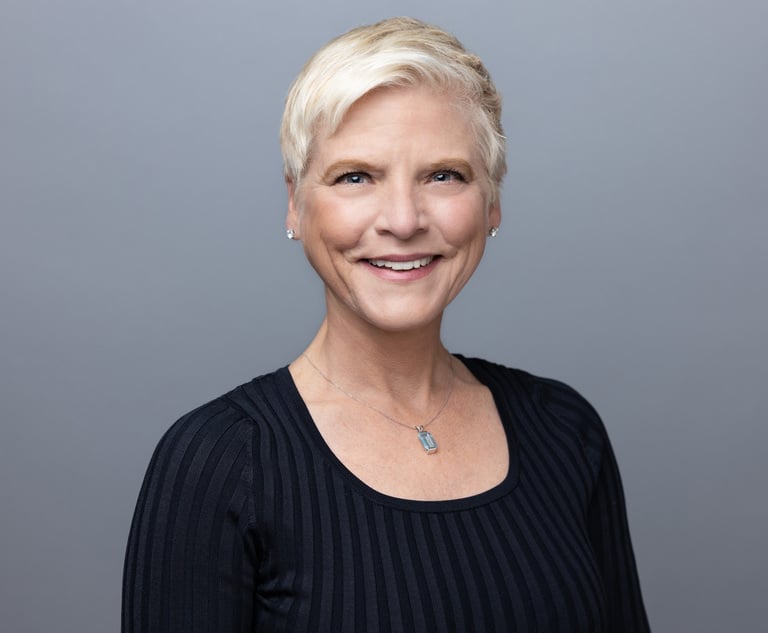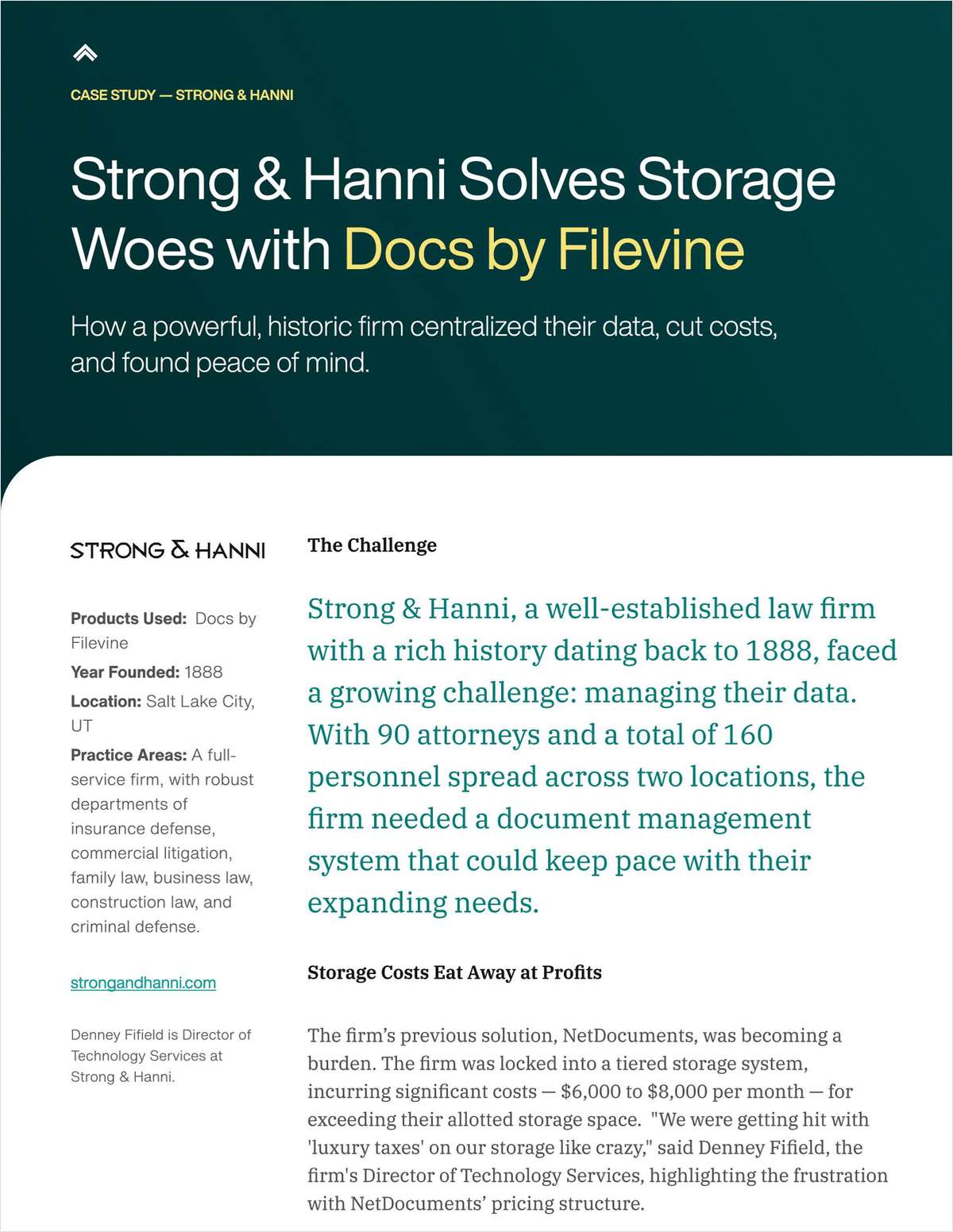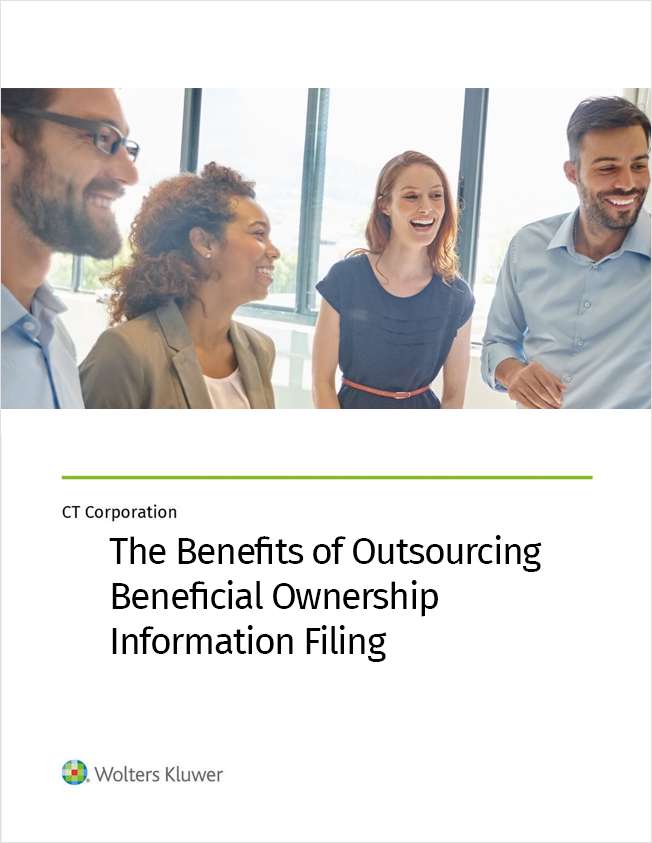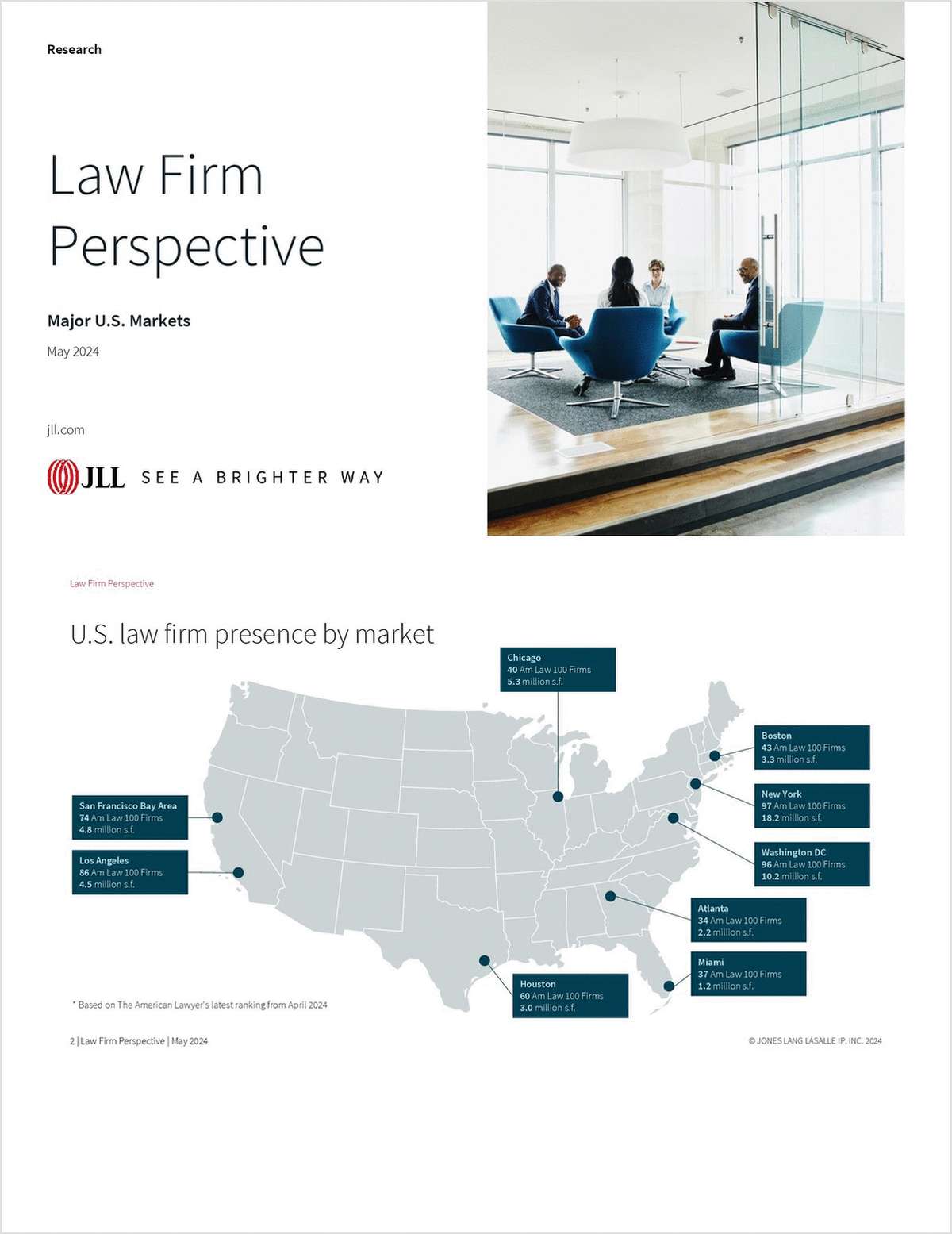 Credit: Hanna Barczyk
Credit: Hanna BarczykDespite Anxiety-Inducing Trends, Am Law 100 Rose to the Challenge in 2017
Last year was one of the best in recent memory for the financial fortunes of the Am Law 100, but few firms are able to rest easily given concerns about the industry's long-term outlook.
April 24, 2018 at 09:52 AM
12 minute read
In many respects, 2017 could be considered the Am Law 100's best year since the 2009 recession. Revenue grew at its fastest rate since the big dipper, up 5.5 percent to a record $91.4 billion. Net income—the pool of money firms pay out to their ever-shrinking equity partnership—did even better than the top line, increasing 6.1 percent. That was the second-largest increase since the recession, falling short of only the 7.4 percent increase in net income in 2014.
 Looking to buy the report or leverage the Am Law 100 data with powerful data visualizations and expert analysis? Access Premium Content
Looking to buy the report or leverage the Am Law 100 data with powerful data visualizations and expert analysis? Access Premium ContentRevenue per lawyer rose 3.2 percent from last year to $936,655. That came after a year in which RPL, often considered the best barometer of law firm financial health, grew 1.5 percent, causing concern last year that a slowdown was in the offing. Quite the contrary. The Am Law 100 turned in the second-best RPL growth since 2010, behind only the 2014 performance of 3.7 percent growth.
What a year. Right?
These upbeat results come despite long-term trends in the industry that are said to be keeping law firm leaders anxious about the future. They hear clients talk more and more about alternative legal service providers. What's that CLOC thing that happened in Las Vegas? The Big Four are coming. All the while, partners acquiesce to demands for discounts. Realization rates, meanwhile, are far from where they were pre-recession.
So, how to square those trends with one of the most positive years in recent memory? Eric Seeger, a principal at law firm consultancy Altman Weil, says last year indeed provided some positivity for Big Law. Demand rose slightly and firms were able to push through rate increases. As productivity bumped up, those incremental hours went straight to the bottom line, he says. But there are still a number of headwinds. The majority of firms still report to Altman Weil that demand is below pre-recession levels. Celebrating RPL increases of 3.2 percent, Seeger says, is a measure of how far expectations have fallen since the recession.
“The good old days have not returned,” Seeger says. “What we're seeing is firms can squeeze performance gains out of a slight or moderate increase in demand.”

A Year of Uneven Growth
A further peek behind the numbers shows that in 2017 the trend of the biggest, richest firms outperforming their smaller peers accelerated. The largest firms outperformed their smaller competition in both revenue and profit growth. Even so, the smaller firms on the survey fared better than they have in recent years.
One way to see the divergence among the Am Law 100 firms is to group them by quartiles of revenue. The top 10 firms account for a little more than 25 percent of the Am Law 100's revenue. The next 17 firms account for the next 25 percent of revenue. Firms No. 28 thru 53 account for another quarter of the revenue. And the final 47 firms generate the final quarter of Big Law bucks.
How do those groups stack up in terms of growth?
The top 10 firms accounted for 38 percent of the growth in the Am Law 100 last year. The next group, firms 11 through 27, accounted for 25 percent of the growth. The third quartile accounted for 20 percent. And the bottom quartile, nearly half of the firms on the survey, split among themselves just 17 percent of the growth last year. For a plurality of the Am Law 100, it is a daily fight to find growth.
This sort of uneven revenue growth was not apparent in last year's survey.
In last year's survey, revenue was still split evenly (roughly 25 percent) among the same groups of firms: 1 through 10; 11 through 27; 28 through 53; and 54 through 100. But the groups shared an almost perfectly even distribution of the total Am Law growth. The second quartile actually accounted for the most growth—26.8 percent—while the bottom quartile had barely less, 24 percent. The top quartile was responsible for 24.4 percent of the growth.
If you want to see this change using the statistic The American Lawyer has long held out as the best test of law firm financial health, revenue per lawyer, here is average RPL growth from 2017 listed in order for the four quartiles: 4.2 percent; 2.8 percent; 2.3 percent; 2.7 percent. And here is what it was for 2016: 1.5 percent; 3.2 percent; 2.4 percent; 1.7 percent.
And what about profitability?
In a year where average profits per equity partner rose 6.3 percent among the 100 firms, the top 10 firms grew profits per equity partner by 8.4 percent on average. The next group, firms 11 through 27, grew PPP by an average of 5.8 percent. The third quartile, firms 28 through 53, saw PPP increase 5.9 percent on average. The bottom quartile, firms 54 through 100, saw PPP increase 3.4 percent. Take just the 10 largest firms out of the survey, and PPP among the rest of the 90 firms increased 4.6 percent on average.
This sort of uneven profitability growth is more dramatic than the year before.
In 2016, PPP rose by 4.2 percent across the Am Law 100. The first and second quartiles of firms by revenue both increased PPP by an average of 5.6 percent. The third quartile increased PPP by 4.7 percent. The bottom quartile saw a 3.2 percent increase.
“Those firms—the top firms—are really only competing with each other,” says Janet Stanton, a partner at law firm consultancy Adam Smith, Esq. “They are not competing with Axiom. They're not competing with in-house, as the other firms are, which will put pressure on pricing. People go to these top firms, the ones that are pulling away, for the hardest, best stuff. And these firms can attract the best talent as a result. It becomes almost a virtuous cycle.”

The Story Behind Stratification
So what accounts for the acceleration from the pack by the largest firms?
Some of it is due to Norton Rose Fulbright, the 10th-largest firm by revenue in both 2016 and 2017, absorbing Chadbourne & Parke. Assuming the Chadbourne acquisition would have added $230 million to Norton Rose's top line—Chadbourne's last reported revenue figure—the top quartile of firms by revenue last year would have still outgrown their peers. The top 10 firms would still have accounted for about 34 percent of the total growth in the Am Law 100. (The $230 million figure is an estimate to account for the merger, and it is almost certainly a generous one considering Norton Rose added $270 million to its top line last year—which thus assumes the legacy Norton Rose lawyers contributed almost no growth.)
Either way, the story of a distressed law firm's fate resting in the hands of an international giant is a reflection of today's legal market benefiting the biggest firms.
Some of the stratification in this year's survey is also due to a small sample size among the first quartile of firms. There are only 10 of them, and their size means a good or bad year can have an outsize effect on the group's relative performance. DLA Piper is an example of that effect. Last year, it grew revenue by 6.6 percent, or $164 million. That represented 3.7 percent of the Am Law 100's growth on its own. In the prior year, DLA's revenue fell, helping to bring the top 10's share of revenue growth down to earth.
But the bigger story is Kirkland & Ellis. And, to be sure, Latham & Watkins.
Start with Kirkland. It is now the largest firm in the Am Law 100 by revenue. And it accomplished that fact by recording the highest growth rate among any firm in the survey last year: 19.4 percent. Its top-line figure of $3.165 billion is a new record. To put Kirkland's growth into the context of its size, consider this: Last year, it added $514 million in organic revenue growth. That is the equivalent of acquiring Troutman Sanders, the No. 66 firm on the Am Law 100. In one year, Kirkland's revenue growth was greater than the revenue posted by 35 of the 100 largest firms in the country. The Chicago-based law firm, on its own, accounted for 11.6 percent of the Am Law 100's revenue growth last year. In 2016, another year in which Kirkland saw double-digit percentage growth in revenue, the firm was responsible for about 9 percent of the Am Law 100 growth.
Latham has been a similar story in recent years. Like Kirkland, the firm also cracked the $3 billion barrier last year, a first for the Am Law 100. The 8.4 percent revenue growth it enjoyed last year meant the firm added $240 million to its top line, accounting for 5.5 percent of the total growth among firms in the survey. In 2016, that figure was 4.7 percent.
Both firms have benefited from the work their management put in over the past few years recruiting star partners in high-rate practice groups including mergers and acquisitions, private equity and high-stakes litigation. Kirkland's entrée into the world of big-ticket mergers is perhaps the best example of its strategy to target rate-insensitive markets, and it hasn't had a better year than the last. According to data compiled by Mergermarket, Kirkland last year advised on more transactions (489) than any other firm. And it saw the largest increase in the value of the deals it advised on from the previous year, up 63.5 percent in 2017, to $432 billion. Kirkland and Latham rank first and second in the Am Law 100, respectively, and in the number of private equity deals they work on.

But what about the other end of the spectrum?
Among the firms that comprise the bottom quartile of revenue, things were far from bleak. That group of 47 firms had RPL growth and PPP growth last year that outpaced the Am Law 100 in 2016. The vast majority—40 of the 46 firms—saw increases in revenue. On PPP, 37 of the 46 (80 percent) saw gains from last year. The group's arrow is pointing up. But these firms continue to trail the market averages in any given year.
That is in part, again, due to sample size. With 47 firms in the group, it is harder for one or two firms' excellent years to pull up the rest. But it is also due to more firms in the bottom group seeing their revenue shrink—and shrink more—than what is seen among the top firms. The bottom quartile is competing in a more volatile market for legal services.
That is not to say that the bottom quartile was devoid of standout performers. Count the lone newcomer to the Am Law 100 this year, Davis Wright Tremaine, among that group. It saw revenue increase 7.4 percent to $357 million. Profits per partner jumped up 11 percent to $716,000.
Six firms in the group enjoyed double-digit revenue growth: Sheppard, Mullin, Richter & Hampton; Fried, Frank, , Harris, Shriver & Jacobson; Cozen O'Connor; Ogletree, Deakins, Nash, Smoak & Stewart; Kramer Levin Naftalis & Frankel; and Akerman. Combined, those six firms added nearly $300 million to their top line (about $60 million more than Latham & Watkins did, for reference). But almost half of that growth was eaten up by the six firms in the quartile that saw revenue fall last year: Bryan Cave, Locke Lord, Jenner & Block, Crowell & Moring, Cadwalader, Wickersham & Taft and Husch Blackwell. In the top group, only Jones Day saw revenue decrease. And that decline was marginal, at less than 1 percent. Of the five bottom-quartile firms that had revenue decreases, two were of nearly 10 percent.
Profitability is even more volatile among the lower-quartile groups. Of the bottom 47 firms, nine saw a decline in PPP, with six of those firms seeing declines greater than 5 percent. Crowell & Moring's PPP declined more than 22 percent; Jenner & Block's, 18 percent. Among the top 10 firms, only one experienced a dip in PPP (again, Jones Day), but it was, again, marginal: 3 percent.
Last year was a positive one for the Am Law 100, make no mistake. But, if you are not at a top firm, don't rest on your laurels. The Big Law market remains hotly competitive for the majority of firms.
This content has been archived. It is available through our partners, LexisNexis® and Bloomberg Law.
To view this content, please continue to their sites.
Not a Lexis Subscriber?
Subscribe Now
Not a Bloomberg Law Subscriber?
Subscribe Now
NOT FOR REPRINT
© 2024 ALM Global, LLC, All Rights Reserved. Request academic re-use from www.copyright.com. All other uses, submit a request to [email protected]. For more information visit Asset & Logo Licensing.
You Might Like
View All


'Sharp and Profound' Policy Shifts Prompt DC Law Firms to Evaluate Opportunities, Challenges
5 minute readTrending Stories
- 1Elon Musk Names Microsoft, Calif. AG to Amended OpenAI Suit
- 2Trump’s Plan to Purge Democracy
- 3Baltimore City Govt., After Winning Opioid Jury Trial, Preparing to Demand an Additional $11B for Abatement Costs
- 4X Joins Legal Attack on California's New Deepfakes Law
- 5Monsanto Wins Latest Philadelphia Roundup Trial
Who Got The Work
Michael G. Bongiorno, Andrew Scott Dulberg and Elizabeth E. Driscoll from Wilmer Cutler Pickering Hale and Dorr have stepped in to represent Symbotic Inc., an A.I.-enabled technology platform that focuses on increasing supply chain efficiency, and other defendants in a pending shareholder derivative lawsuit. The case, filed Oct. 2 in Massachusetts District Court by the Brown Law Firm on behalf of Stephen Austen, accuses certain officers and directors of misleading investors in regard to Symbotic's potential for margin growth by failing to disclose that the company was not equipped to timely deploy its systems or manage expenses through project delays. The case, assigned to U.S. District Judge Nathaniel M. Gorton, is 1:24-cv-12522, Austen v. Cohen et al.
Who Got The Work
Edmund Polubinski and Marie Killmond of Davis Polk & Wardwell have entered appearances for data platform software development company MongoDB and other defendants in a pending shareholder derivative lawsuit. The action, filed Oct. 7 in New York Southern District Court by the Brown Law Firm, accuses the company's directors and/or officers of falsely expressing confidence in the company’s restructuring of its sales incentive plan and downplaying the severity of decreases in its upfront commitments. The case is 1:24-cv-07594, Roy v. Ittycheria et al.
Who Got The Work
Amy O. Bruchs and Kurt F. Ellison of Michael Best & Friedrich have entered appearances for Epic Systems Corp. in a pending employment discrimination lawsuit. The suit was filed Sept. 7 in Wisconsin Western District Court by Levine Eisberner LLC and Siri & Glimstad on behalf of a project manager who claims that he was wrongfully terminated after applying for a religious exemption to the defendant's COVID-19 vaccine mandate. The case, assigned to U.S. Magistrate Judge Anita Marie Boor, is 3:24-cv-00630, Secker, Nathan v. Epic Systems Corporation.
Who Got The Work
David X. Sullivan, Thomas J. Finn and Gregory A. Hall from McCarter & English have entered appearances for Sunrun Installation Services in a pending civil rights lawsuit. The complaint was filed Sept. 4 in Connecticut District Court by attorney Robert M. Berke on behalf of former employee George Edward Steins, who was arrested and charged with employing an unregistered home improvement salesperson. The complaint alleges that had Sunrun informed the Connecticut Department of Consumer Protection that the plaintiff's employment had ended in 2017 and that he no longer held Sunrun's home improvement contractor license, he would not have been hit with charges, which were dismissed in May 2024. The case, assigned to U.S. District Judge Jeffrey A. Meyer, is 3:24-cv-01423, Steins v. Sunrun, Inc. et al.
Who Got The Work
Greenberg Traurig shareholder Joshua L. Raskin has entered an appearance for boohoo.com UK Ltd. in a pending patent infringement lawsuit. The suit, filed Sept. 3 in Texas Eastern District Court by Rozier Hardt McDonough on behalf of Alto Dynamics, asserts five patents related to an online shopping platform. The case, assigned to U.S. District Judge Rodney Gilstrap, is 2:24-cv-00719, Alto Dynamics, LLC v. boohoo.com UK Limited.
Featured Firms
Law Offices of Gary Martin Hays & Associates, P.C.
(470) 294-1674
Law Offices of Mark E. Salomone
(857) 444-6468
Smith & Hassler
(713) 739-1250











